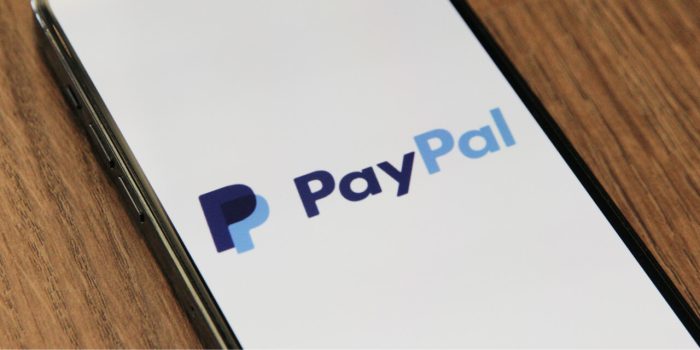The thriving BNPL market has seen setbacks in recent months. Yet, could embedded lending be a solution for lenders avoiding high-profile disputes like that between Amazon and Visa?
In November last year, Amazon’s UK website told customers that it would no longer be accepting payments via UK-issued Visa credit cards. This was due to a dispute with the financial services corporation over the high fees charged for processing transactions. The announcement sent shockwaves across the market, and a reported 4.7% slump in Visa shares erased USD 22 billion in value.
Amazon’s conflict with Visa
This was not the first time that the ecommerce giant had caused disruption. In August 2021, customers in Singapore were informed that Amazon would be implementing a 0.5% surcharge on all orders made using a Visa credit card. This was followed up a month later with a similar announcement in Australia, although both of these were later dropped.

In the United Kingdom, more than 50% of all payments are credit card-based, with Visa having an 82% market share. This movement would have affected millions of consumers who use a Visa credit card to buy products. In addition to this, some of the UK’s biggest banks, including HSBC, offer Visa on credit cards. Meanwhile, Barclaycard, the UK’s biggest credit card company, only uses the Visa network.
It was suggested that Brexit was to blame for this maneuver. Post-Brexit, an EU cap on interchange fees that had applied to the UK was no longer relevant. This allowed card networks to raise their charges.
Interchange fees vary from country to country. The EU has increasingly sought to regulate these fees, hoping to create equality across their member countries and increase card competition in the EU single market. They introduced a cap of 0.3% for credit cards in 2015, which was amended in 2019 to include online or phone transactions at 1.15% and 1.5% respectively.
Due to the cross-border nature of transactions now between the EU and the UK, with Amazon’s transactions being processed in the EU, Amazon would have been liable for the 1.15% interchange fee on an online purchase.
Visa bites back at Amazon
Amazon stated that the fees were an obstacle to them providing the best prices for customers. Meawhile, Visa accused Amazon of decreasing consumer payment options.
This isn’t the first time a large retailer has challenged well-established payment providers. Yet, Amazon had been observed pressuring Visa to lower its fees for some time.
This is a sign of the growing frustration from retailers over the costs associated with major card networks. The dispute could be a sign for the credit-card industry, showing that large retailers have the power and potential to seriously disrupt the banking sector.
Fortunately, the dispute between Amazon and Visa seems to have been settled now. The two businesses having reached an agreement after weeks of negotiations to postpone the ban for UK users.
It is also worth noting that the Payment Systems Regulator launched a review last year. This found that interchange fees had significantly increased since the EU cap was lifted. The Regulator is considering whether action needs to be taken on the issue.
Is Amazon entering the payment space?
Although Amazon and Visa seem to have buried the hatchet, for now, is this a sign of things to come? Is Amazon building its own next-generation bank?
Fintech startups had been expected to be the most likely disruptors. Yet, big technology companies like Amazon are moving towards entering the financial services sector themselves.
Amazon has an extensive customer base, digital prowess, and customer experience skills, alongside services such as Amazon Cash and Amazon Pay. in addition to offering working capital loans for SMEs and their own co-brand credit card, Amazon seemingly has everything needed to succeed in banking.
There has even been speculation for years that Amazon will offer a checking account. With customers replacing a credit card with an Amazon bank account, Amazon would be able to avoid millions of dollars in fees from credit companies altogether.
Have credit cards reached their expiry date?
Roger De’Ath, Head of Ecommerce at TrueLayer, believes technology offers an opportunity. Tech could offer retailers solutions that allow them to break away from the grasp of card networks and the invisible layer of hidden costs and unwieldy payment structures they demand.
Consumer expectations are rising along with new technologies, and as consumers grow used to easy and convenient ecommerce payments. Banks and credit card companies may have to reorient and accelerate their rate of progress in order to remain relevant. Otherwise, they risk being removed from forward-thinking retailers like Amazon, Facebook, and Google, ultimately losing access to the market.
The likes of Visa, Mastercard, and American Express are already facing competition from challengers such as Affirm, Afterpay, Klarna, and Sezzle that offer buy now, pay later (BNPL) services. Klarna particularly, until recently, had seen impressive growth with its customer base expanding from 7 million to 16 million since the beginning of 2020.
Of course, we recently saw Klarna’s valuation plumment following a round of lay-offs made in anticipation of a coming recession. Yet, these issues had everything to do with a coming financial crunch, and little to do with the potential of the BNPL market.
BNPL brands are still chipping away at the market share for credit card companies. GlobalData’s research reports that 47% of under 35s today do not own a credit card. Instead, young people are turning more and more to BNPL schemes that act as an entry product for younger consumers new to credit. Is this a sign that lenders need to offer BNPL to stay relevant to retailers?
The benefits of BNPL
BNPL services offer interest-free purchases, have softer credit checks, and are often manageable via apps. This makes them more accessible and convenient than having to apply for a credit card, appealing to the younger, more technology-savvy generations. BNPL has changed consumer expectations of the borrowing experience and expanded the role lenders can play in shopping journeys.
Ultimately, in order to sustain profitable growth, credit card companies may need to rethink their products, economics, and value propositions. Otherwise, they may be squeezed out by, not only the new fintech kids on the block, but by powerful retailers willing to throw their weight around. Re-imagining products to meet today’s consumer needs, alongside attracting younger consumers with tailored solutions, should be at the forefront of the industry’s minds.
The three Rs of BNPL could win over Amazon
Indeed, established lenders are empowered by ‘three Rs’:
- Reputation
- Regulation
- Recession
Established lenders have an existing reputation in the market, a relationship with the regulators who currently have BNPL in their sights, and the resources to outlast the coming recession. Established lenders offering a BNPL position could take over the market and offer something valuable to eretailers like Amazon.
To do that, however, you need the right technology, and digital transformation is, of course, far from easy. That’s where the FintechOS platform comes in.
To find out more about how FintechOS can turn any bank into a digital BNPL provider, see our BNPL solution page.
Via: https://fintechos.com/





